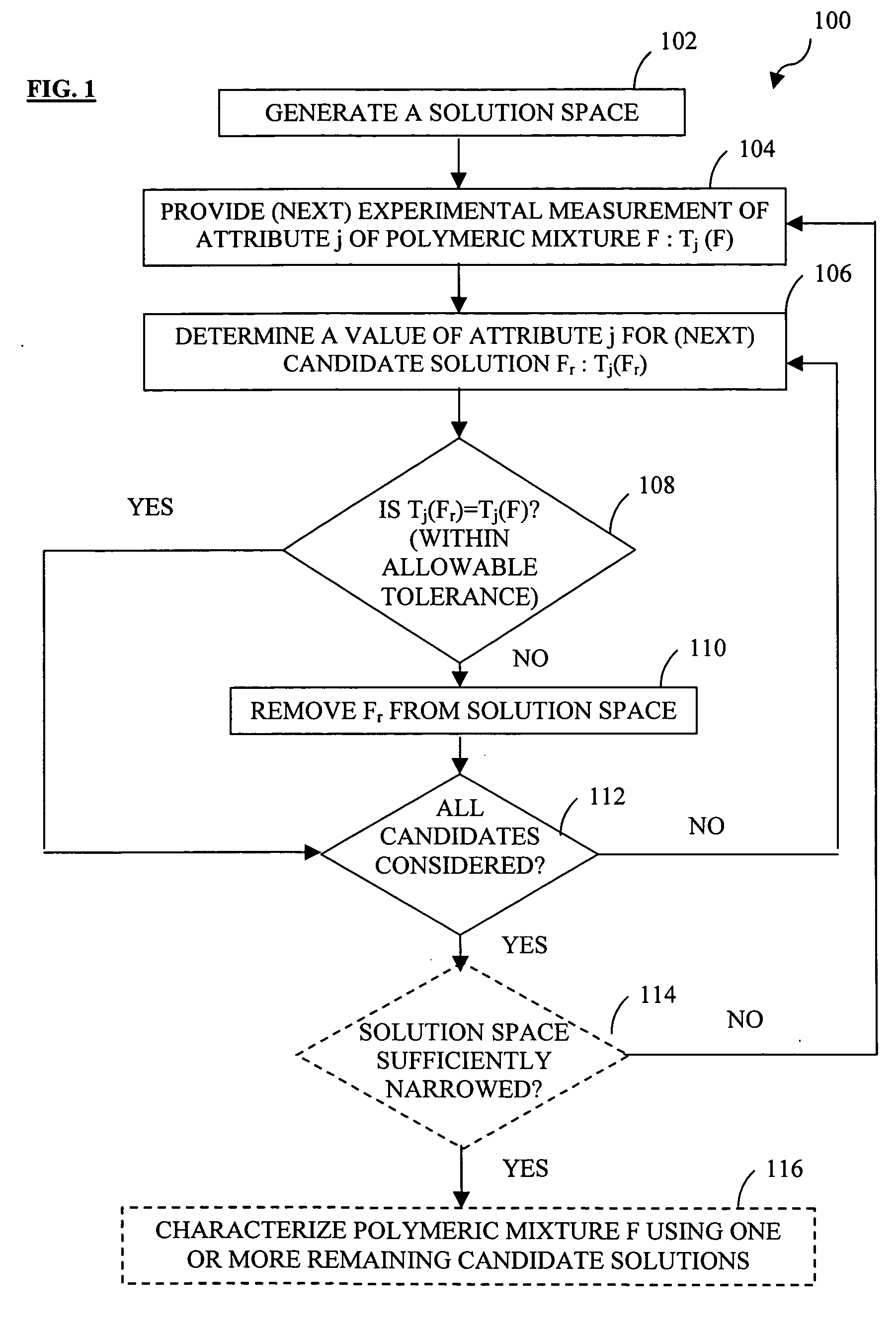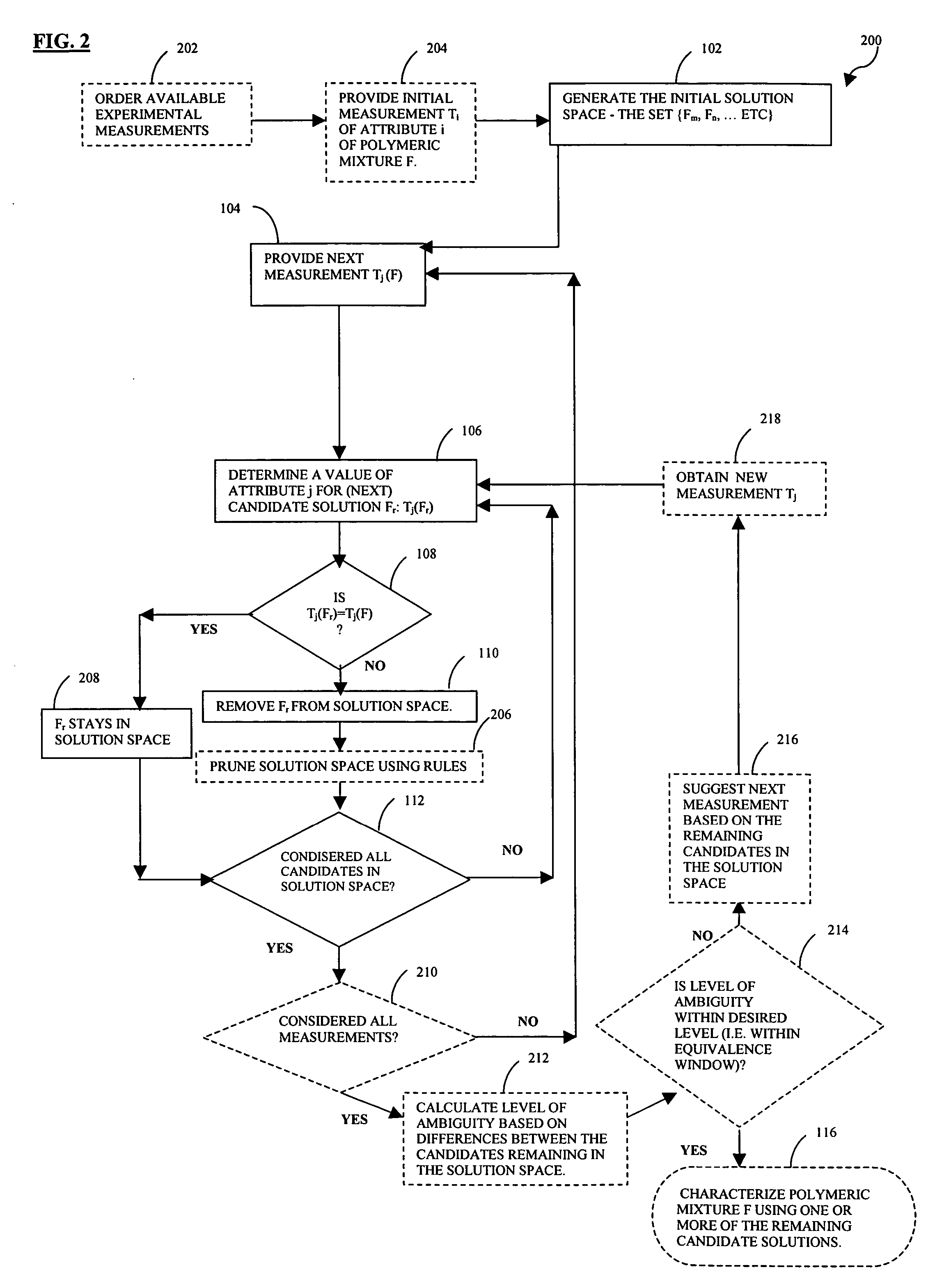Methods and apparatus for characterizing polymeric mixtures
a polymer mixture and polymer technology, applied in chemical methods analysis, process and machine control, instruments, etc., can solve the problems of inability to solve problems such as mathematical formulation of problems, insufficient measurement of one type of measurement,
- Summary
- Abstract
- Description
- Claims
- Application Information
AI Technical Summary
Benefits of technology
Problems solved by technology
Method used
Image
Examples
example 1
Characterization of an HSGAG Mixture
In one embodiment, characterization of an HSGAG mixture involves the use of Matrix Assisted Laser Desorption / Ionization Mass Spectroscopy (MALDI-MS) measurements, as well as NMR spectroscopy measurements. For example, for MALDI-MS, analyses can be carried out on a PerSeptive Biosystems Voyager Elite reflectron time-of-flight instrument in the linear mode with delayed extraction. The oligosaccharide spot can be prepared by adding 1 μL of matrix solution (12 mg / mL caffeic acid in 30%-70% acetonitrile) that contains 0.5-5 μM basic peptide (RG)15 (calculated mass of the (M+H)+ ion=3217.6), and by allowing the spot to crystallize. The instrument settings can be 22 kV, grid at 93%, guide wire at 0.15%, pulse delay 150 ns, and low mass gate at 1,000, 128 shots averaged. The (M+H)+ ions of the basic peptide and the (M+H)+ ion of a 1:1 peptide:saccharide complex are observed in each mass spectrum. The mass of the saccharide can be determined by subtracti...
example 2
Characterization of a Glycoprotein Mixture
In addition to HSGAG mixtures, glycoprotein mixtures can also be characterized using the method of FIG. 2. Each unique component in a glycoprotein mixture includes a peptide backbone with various branched polysaccharides linked to the peptide backbone. The branched polysaccharides are referred to as glycoforms and the places where the glycoforms are linked to the peptide backbone are called glycosylation sites.
Tables 20, 21, and 22 depict a characterization of an illustrative glycoprotein mixture of interest, which may be determined using the method of FIG. 2. Table 20 characterizes the components of the mixture, each having a peptide backbone and attached glycoforms; Table 20 also shows the locations where the glycoforms are attached to the backbone. Table 21 characterizes the sequence of the peptide backbones present in the mixture. Table 22 characterizes the sequence of the branched glycoforms in the mixture.
TABLE 20Example characte...
PUM
| Property | Measurement | Unit |
|---|---|---|
| composition | aaaaa | aaaaa |
| physical measurement | aaaaa | aaaaa |
| chemical measurement | aaaaa | aaaaa |
Abstract
Description
Claims
Application Information
 Login to View More
Login to View More - R&D
- Intellectual Property
- Life Sciences
- Materials
- Tech Scout
- Unparalleled Data Quality
- Higher Quality Content
- 60% Fewer Hallucinations
Browse by: Latest US Patents, China's latest patents, Technical Efficacy Thesaurus, Application Domain, Technology Topic, Popular Technical Reports.
© 2025 PatSnap. All rights reserved.Legal|Privacy policy|Modern Slavery Act Transparency Statement|Sitemap|About US| Contact US: help@patsnap.com



